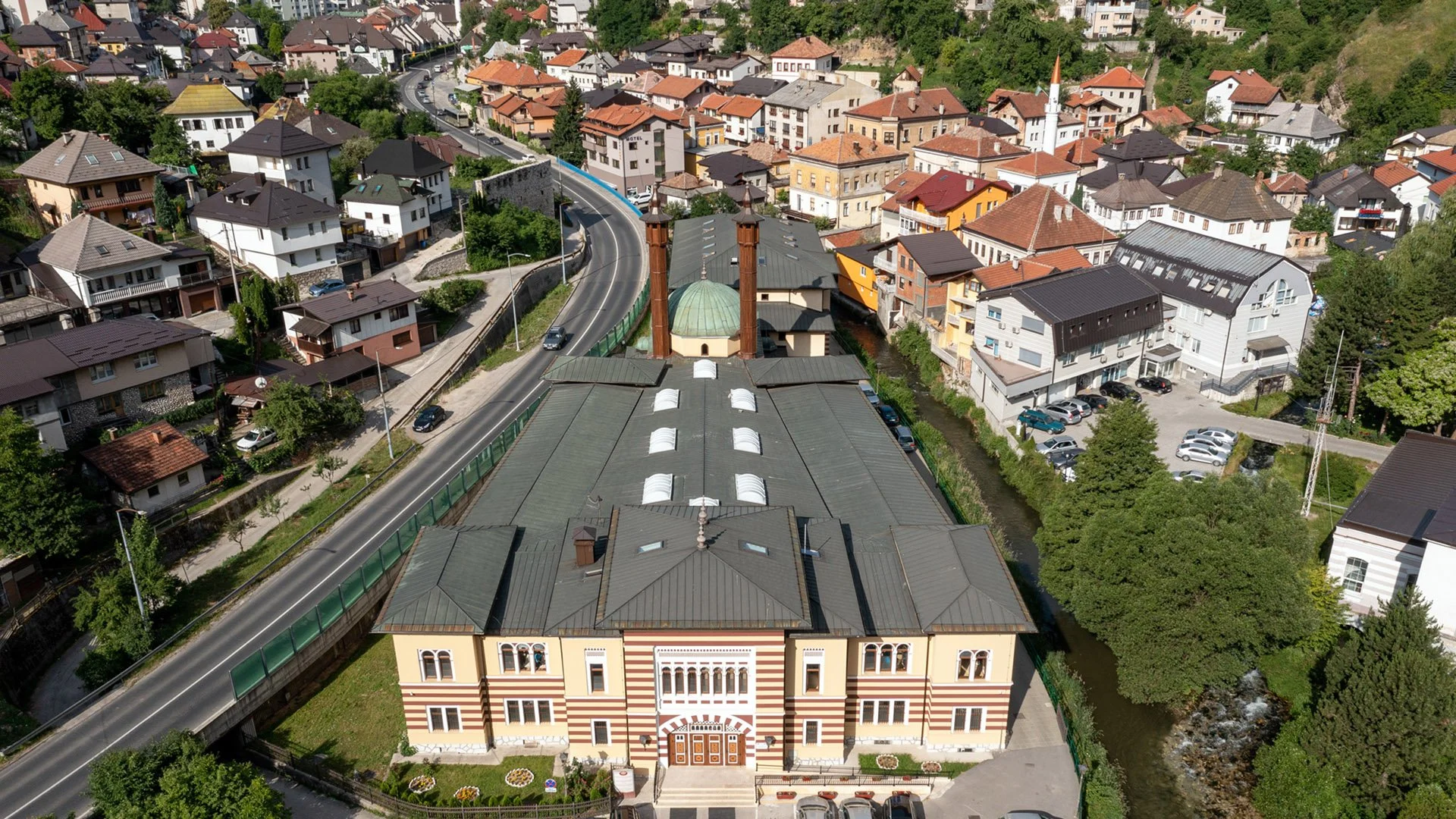
ELČI IBRAHIM-PASHA’S MADRASA IN TRAVNIK
Photo & video: Mirza Hasanefendić
Elči Ibrahim-pasha madrasa was founded in 1705. It was founded by Elči Ibrahim-pasha, one of the viziers who resided in Travnik, and alongside the madrasa he also founded a library, to which he endowed 103 manuscript books.
The building of the madrasa from 175 was razed in 1892, when a railway through Travnik was built; however, Austro-Hungarian authorities of the time wanted to compensate for the razing and built the present building of the madrasa, which was bigger than the previous one, in the 1892-1895 period. The architect of the new building was Ćiril M. Iveković. The style in which it was built is typically referred to in literature as pseudo-Moorish or neo-Moorish. By its appearance and dimensions, the newly-built facility considerably differed from architecture of Travnik of the time and dominated over the urban landscape of the town. Visible characteristics of the new style on the building of the madrasa are following: decorative red and yellow stripes on the façade, two-color arches above the entrance door and onion domes on the minarets. Decorative elements on the madrasa were not characteristic of the previous architecture of Bosnia and Herzegovina but were rather found in countries of North Africa and Moorish Spain.
Upon the end of the Second World War and the establishment of communist rule, further work of the madrasa was prohibited, which was the case with many other madrasas in Bosnia and Herzegovina as well.
In the period from the Second World War to its re-opening, the building of the madrasa served different purposes. In mid-1994, restoration of the building began, as well as activities of returning of the facility to the purpose for which it was erected. The madrasa began to work on 8 October 1994.








